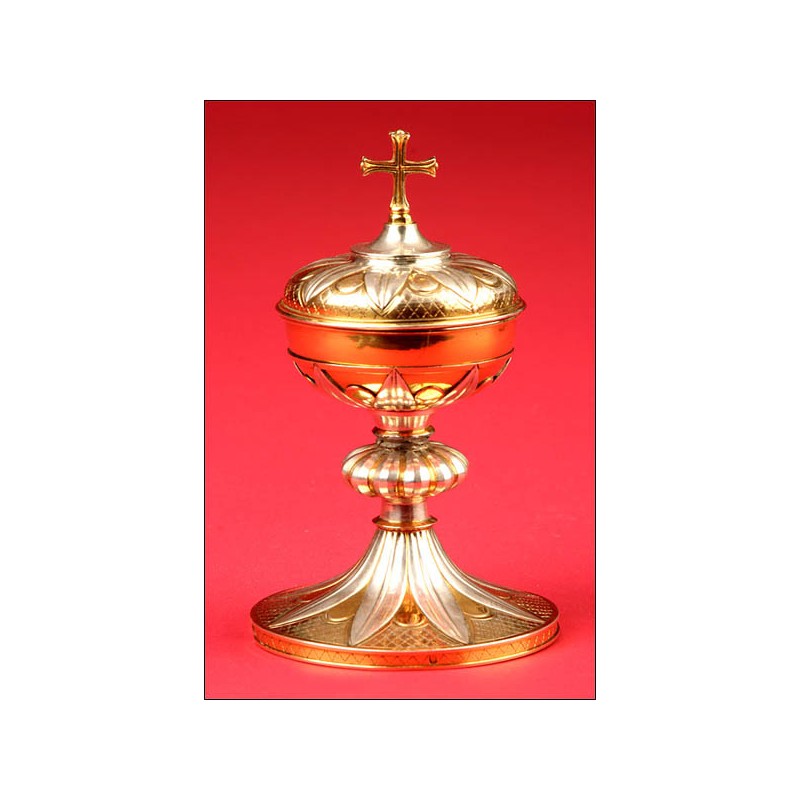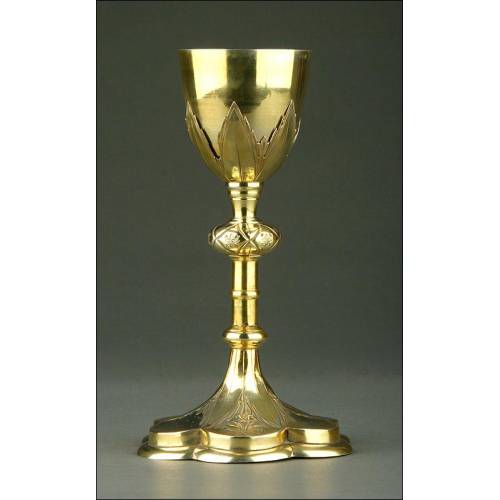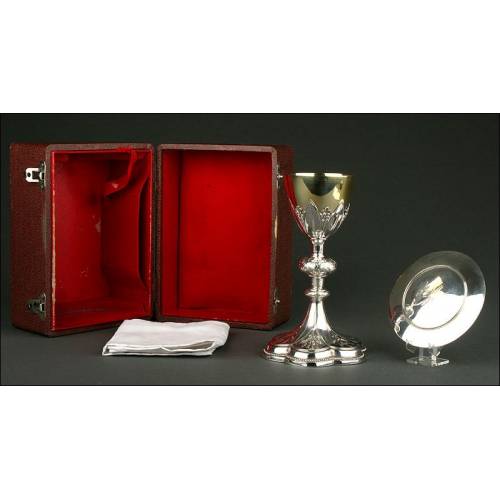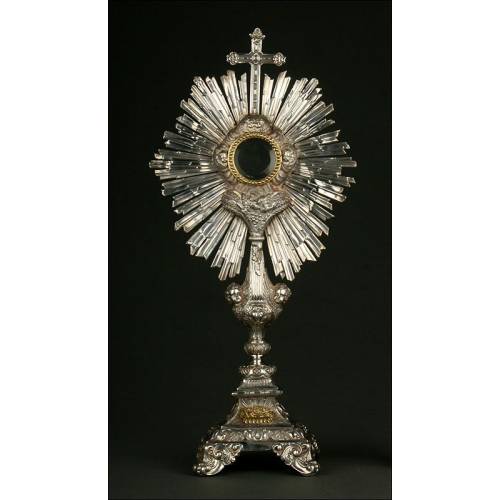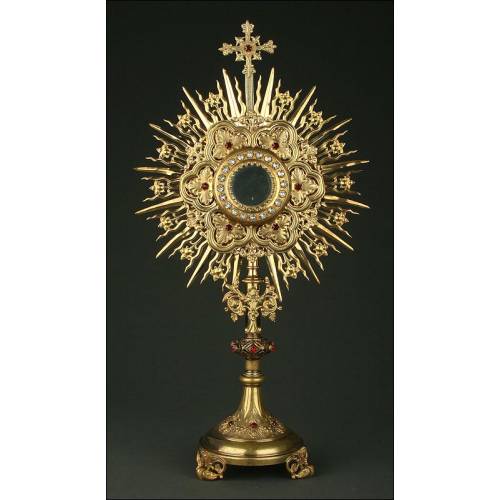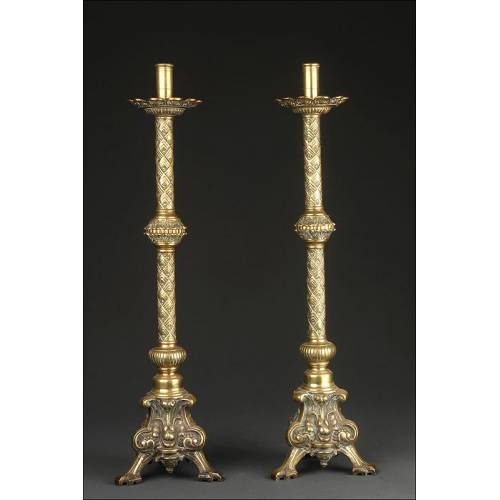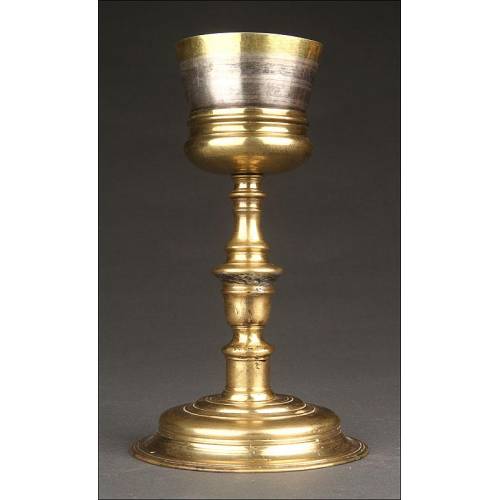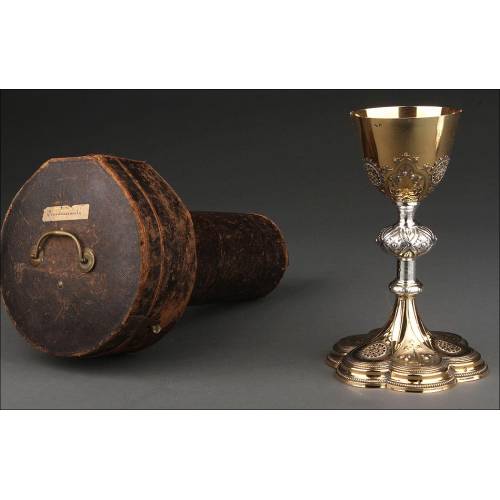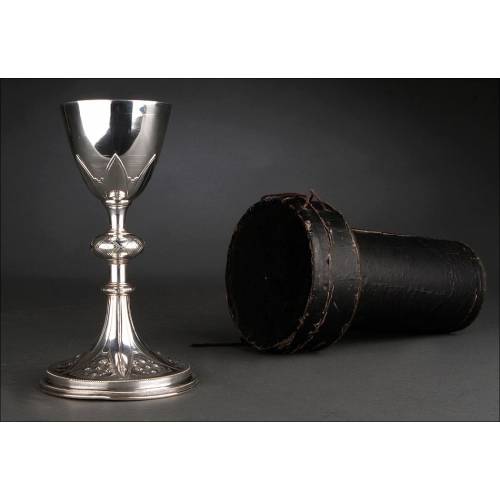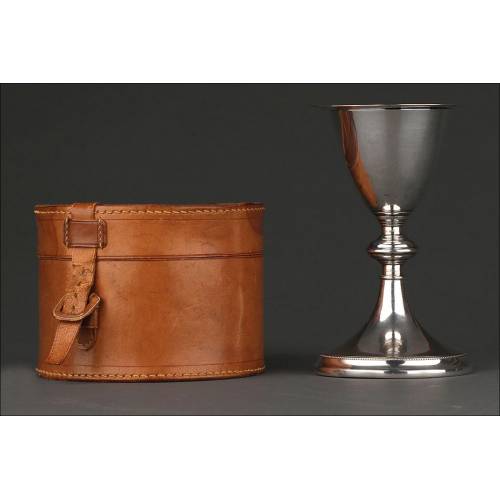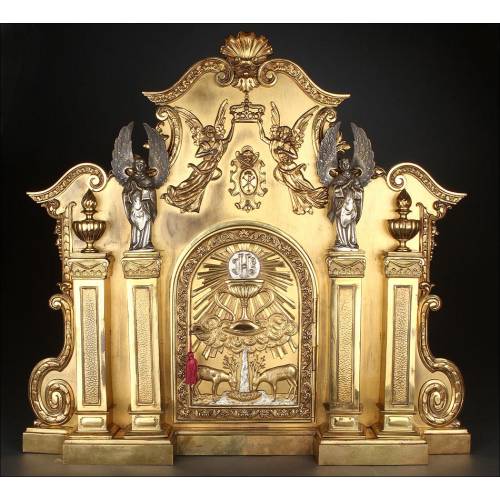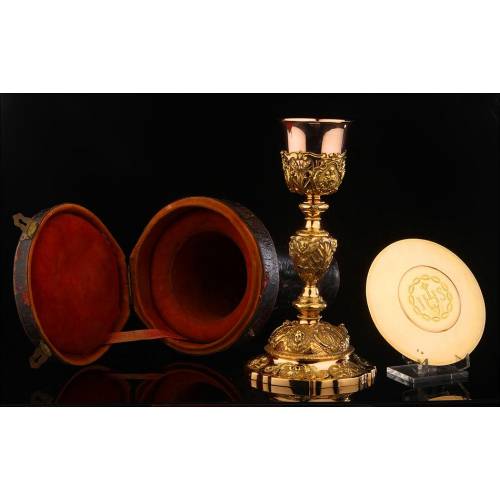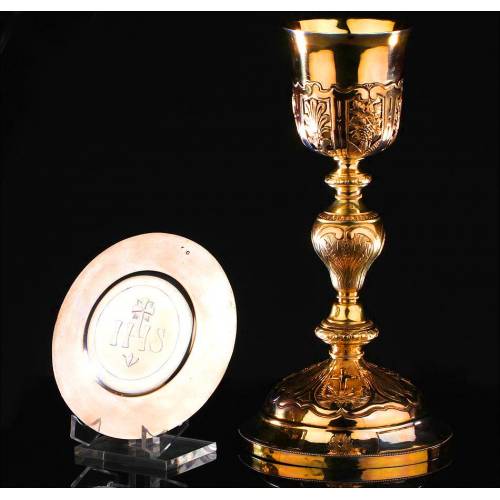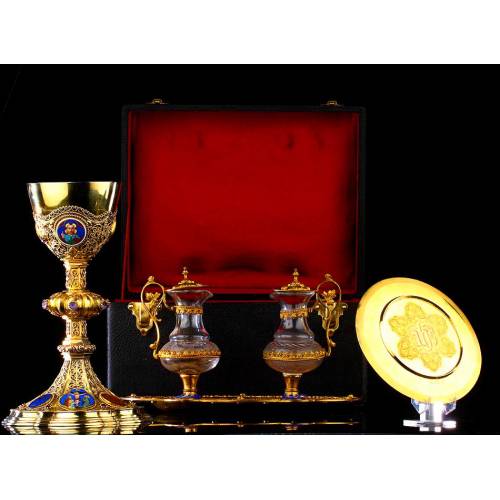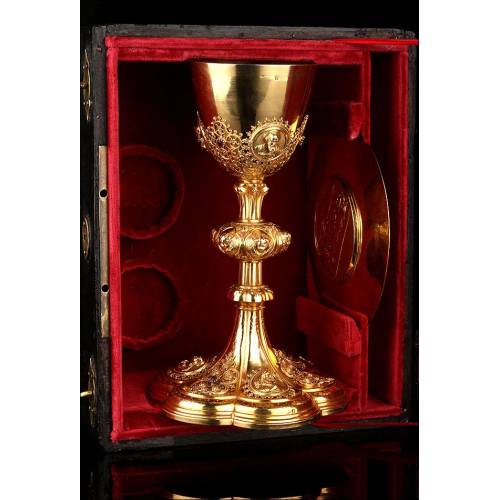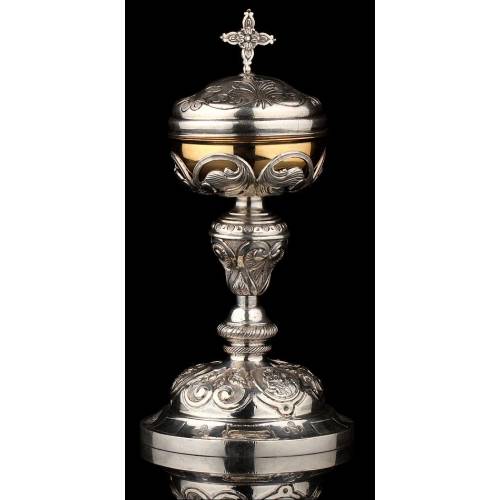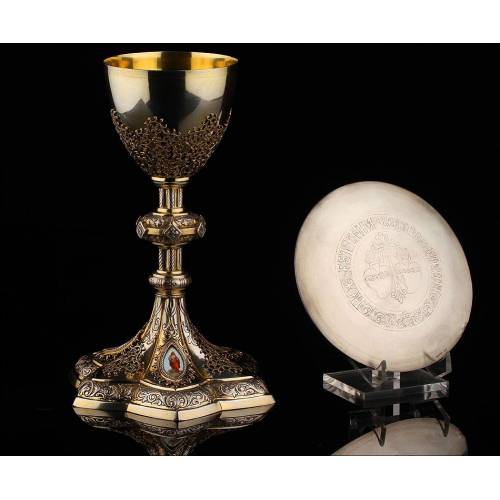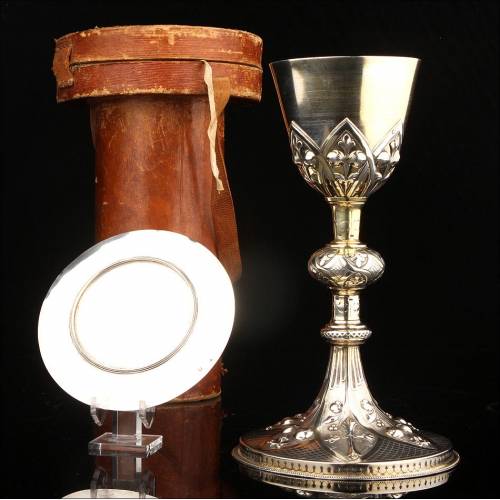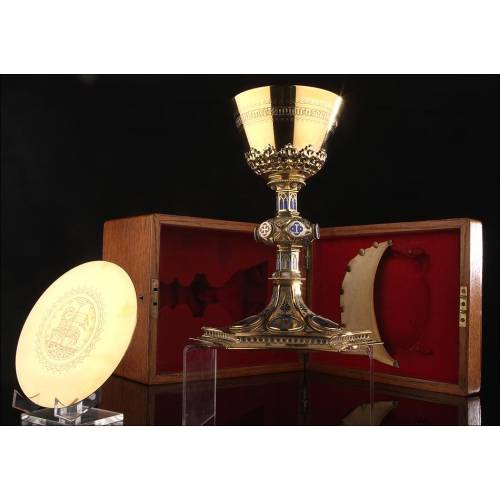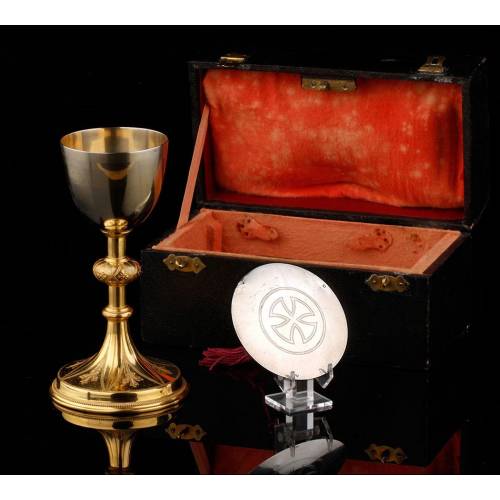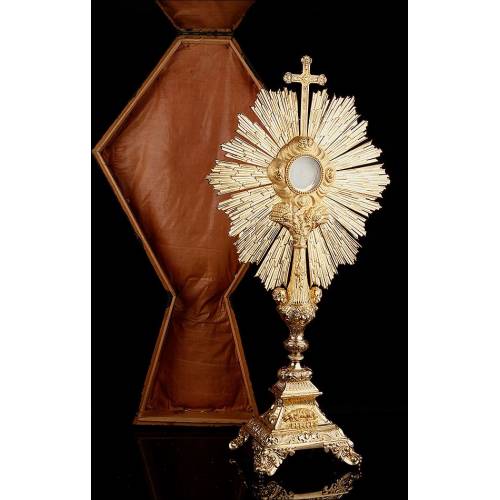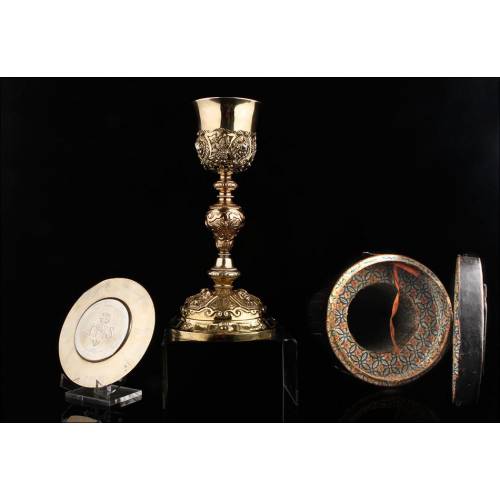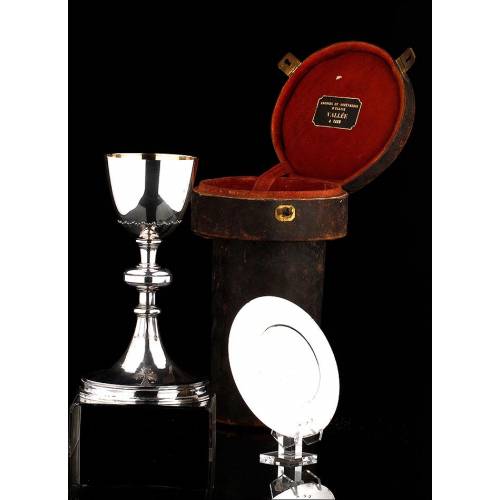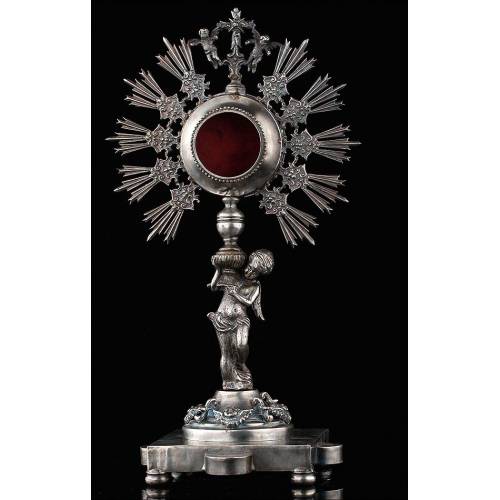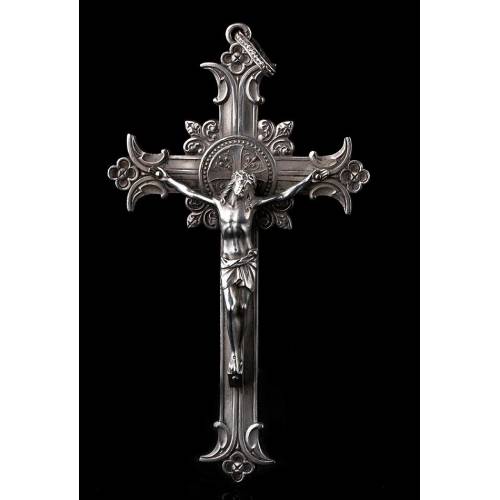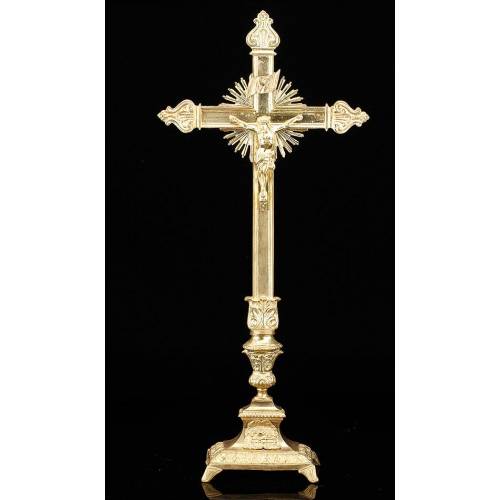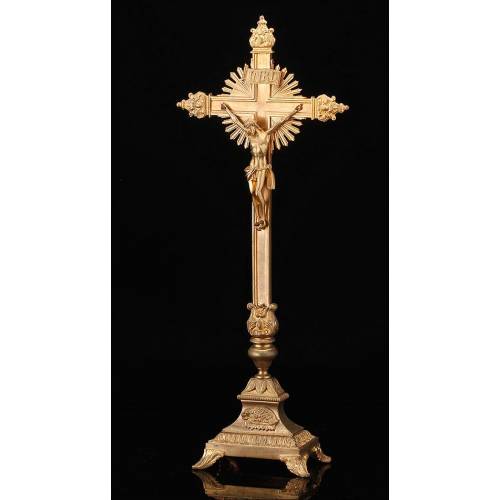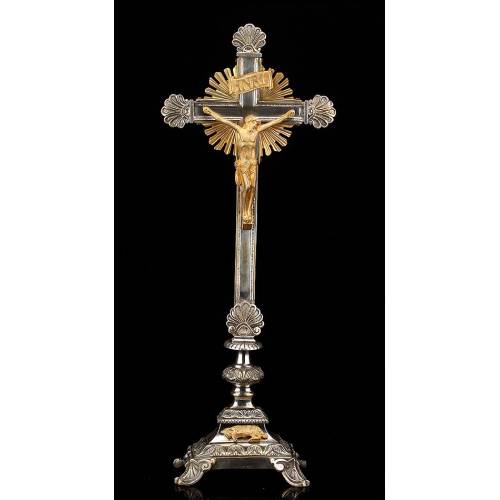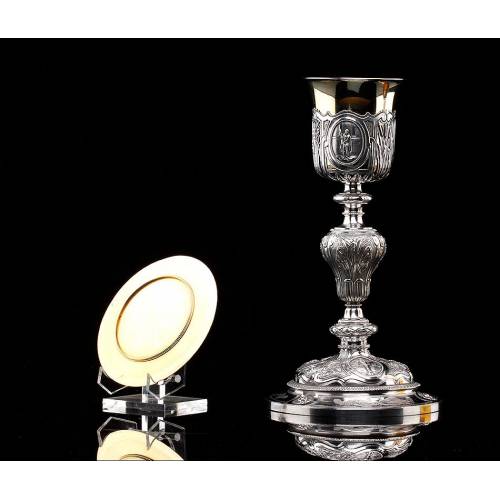J-393
Small French Ciborium in gilded solid silver and silver in its color. France, 1866
French Solid Silver Ciborium. 1866.
Sold!
Small French Ciborium in Solid Silver gilded and silver in its color. Made in Paris, France in 1866. Precious and delicate religious piece of undulating forms and beautiful vegetal decoration based on chiseled leaves, alternating the color of bright silver with gilded parts. It has a wide circular base silhouetted with engraved net decoration and beautiful leaves distributed in perfect geometry. The foot has in its central part a thick knot with alternating golden and silver vertical lines that denotes a great decorativeness to the piece. By means of an original decoration in clear consonance with the base, a beautiful structure of leaves separated by flat ovals is developed in the upper part, which continues on the lid. The top of the piece, in the form of a Latin cross, is beautifully made, and clearly connects with the religious symbolism of this type of piece. The piece is contrasted in all its parts. It presents the contrasts of solid sterling silver with the French seal (Minerva), as well as the contrasts of goldsmith "L.B". It has an oval plate at the bottom with the name of the goldsmith, something unusual in this type of pieces, but extremely useful to know its origin: "L. Bachelet. L'orfévrerie. 58 quai des orfévres. Paris" This magnificent piece has a striking inscription on the base with beautiful and stylized letters: "Souvenir de Mr. Truchy Huproye dont l'ame s'est élevé à Dieu, le 29 de Janvier1866. Petite chapelle du châteu de Charmont. (Souvenir of Mr. Truchy Huproy whose soul has been raised to God on January 29, 1866. Small Chapel of the Château de Charmont).). It has a small repair on the stem and a slight bump on the base, which do not detract from the beauty of this fantastic piece. It is a magnificent solid silver piece, with all its genuine contrasts and detailed dating, which undoubtedly attests to its age and value. Solid pieces such as this example are made by casting, and are of a higher quality, as this is an expensive method of manufacture. The origin of religious silver dates back to the years when, thanks to Constantine the Great, Christianity became the official state religion. From that moment on, this type of objects would become one of the main incomes of silver craftsmen. This type of religious pieces, like the rest of the decorative arts, are in accordance with the style of the moment. The silversmith Louis Bachelet had his workshop at 18 Quai des Orfevres in Paris between 1844 and 1877. Barchelet was well known in his time for the realization of fantastic chalices, devotional crosses and ciboria such as this example of great quality and beautiful workmanship. Splendid and genuine piece by one of the most important goldsmiths of his time. Measures: 15,5 cm (height) and 9,5 cm (diameter of the base). Weight: 217 grams.

